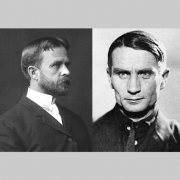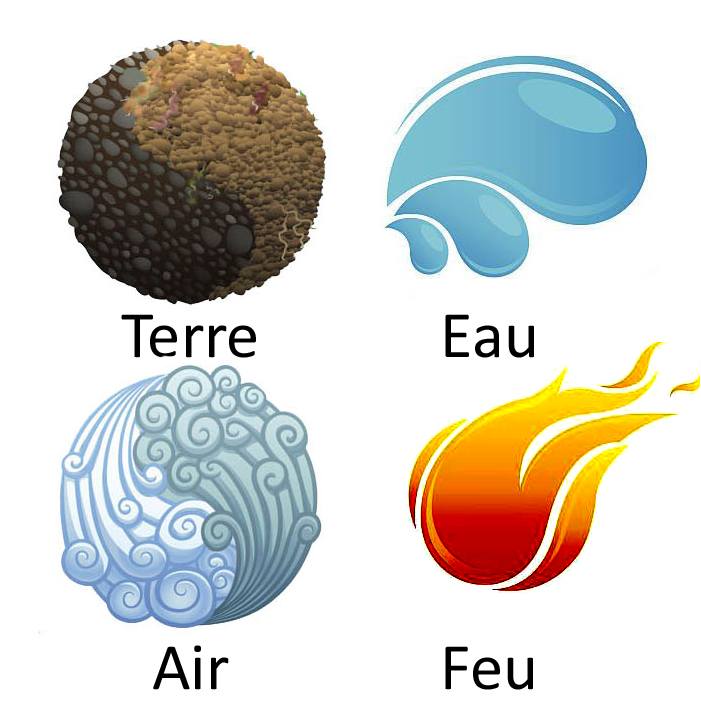Ever heard of the Hundred Years’ War? No, not the one against the English, which was a long time ago, but the current one, Russian-American, which is crystallizing in Ukraine. As its name indicates, it debuted a hundred years ago with a scientific quarrel. Across the Atlantic, following the work of the monk Mendel, Morgan’s team established the chromosomal theory of heredity, while, short of it, the Soviet Lyssenko advocated the heritability of acquired traits.In one case, there are the genes, the assembled structures of DNA, which determine what we are and what our descendants will be. In another case, it is the surroundings, the environment, that can modify the traits of an individual, and is transmitted to following generations.
What followed was a long scientific-ideological because Lysenko’s theory went in the direction wanted by Stalin for which there was no pravda – truth – only in the communist world. Many Soviet scientists risked their careers, and some even their lives, to not follow in this direction. Conversely, in the West, Lyssenko was considered anti-scientific, because the certainty was so strong that only genes determine what is transmitted from one generation to another. Surprisingly, French geneticists did not have such a strong opinion and kept some sympathy for Lyssenkism. No doubt they had some sensitivity towards its “proletarian science” aspect.
What about today? If we stop talking about the heritability of acquired traits, the genes have somewhat descended from their pedestal. In the meantime, there has been a revolution, triggered by genome sequencing. In a few words, let us recall that DNA molecules form a coded message consisting of four chemical elements, the bases. In our genome, these bases are three billion in number. They are taken in groups of three to form “letters” of a message, which are grouped in units of different sizes; these are the genes.
Sequencing our genome, that is to say, reading our genome, was initially, thirty years ago, a colossal enterprise which employed large laboratories for several years. We can only imagine the cost. Technology has since progressed in a dazzling way, so that the time is now numbered by a few hours and the price is a handful of euros.
It has thus been established that the human genome constitutes of forty thousand genes. This figure may seem considerable, but personally, I immediately perceived the contrary, that it is very little. It is necessary to keep in mind the immeasurable complexity of the formation and functioning of a human being.
The genes established by Morgan are said to be structured. These are the ones from which proteins will be built. Lately, there has been evidence of DNA sequences which exert an activity of regulation, sequences called promoters which trigger activity, or other regulators that can stimulate or, the opposite, inhibit. The highlighting on these regulatory sequences earned the Nobel Prize to Jacques Monod and his collaborators. The activity of these regulatory sequences varies according to the tissue on hand, the physiological and pathological conditions. They are an integral part of the genome.
Added to this were small sequences of genetic material which perform a regulatory function without being integrated into the genome, these are microRNA (miRNA), small molecules of RNA which perform different types of regulatory activity. Since their discovery, their numbers have not ceased to grow.
Other elements have recently emerged to complicate the equation. First of all, certain genetic sequences named pseudogenes, believed to be inert and which turned out to be capable of functions just like authentic genes. Then come transposons. Again, these are genetic sequences that can insert themselves between genes, and move around the DNA molecule, or extract themselves from it, modifying its activity. Being integrated into genes, they can participate in a more or less controllable manner, in the transmission of traits, therefore in heredity.
The discovery of these transposable elements in corn earned Barbara McClintock the Nobel Prize in 1983.
That is not all, added to them is epigenetics, also known as the factors outside the genome that influence gene activity, without modifying gene sequence.
In this domain, let us mention DNA methylation, which is small chemical elements, from the methyl group, which bind the bases. DNA methylation is a chemical modification which inactivates certain genes under certain conditions, and this inactivation can be reversible. This inactivation permits, for example, the restoration of balance between male and female in mammals, and that includes humans, because some have two XX chromosomes in comparison to the XY chromosomes in others. Therefore females, compared to males, have an additional X chromosome which is inactivated by methylation, because otherwise the consequences would be grave indeed, such as the case of trisomy 21, a disease characterized by the presence of a supernumerary chromosome X (the 21st).
The methylation of DNA bases is only one of the aspects of epigenetics. There are many others. This domain is complicated and extended to the point that we are now discussing epigenomics.
In summary, to the structural genes of the start are added the regulatory genes, then the micro-sequences, the transposons, and the pseudogenes. All of these constitute the genome. It is necessary to add all the other factors likely to influence cellular physiology without modifying the genome, this is the epigenome.
That is not all. Every living being, in some way or another, has adapted to its environment. Examples are plenty. The camel, adapted to the desert, can last several days without drinking while enduring high temperatures; it has large feet for walking on sand; etc . . . Adaptation is the acquisition of morphological or physiological traits in reaction to the environment, traits that are transmitted from one generation to the next. We are not talking here about the heritability of acquired traits, but it seems close enough.
Let’s return to the notion of strict heritability of acquired traits, that is, heritability which does not directly influence the genome. Is it true? Yes. This is in particular the case of “olfactory imprinting”. The phenomenon is clearly demonstrated in small microscopic worms, real laboratory animals. Their exposure to certain olfactory or gustatory elements, in particular moments of their lives, modifies their behavior. It can be an attraction, or the contrary, a repulsion towards smells or tastes. This behavior persists throughout the life of the animal, and above all, is transmitted to the offspring. This is indeed a trait that is not morphological but behavioral, that is acquired as a result from the environment and is transmitted to future generations.
Olfactory imprinting can be easily verified. Ask a person what his favorite dish is, they will inevitably talk about a dish from their childhood. If this preference is found in their children, it is difficult to establish due the complexity of human behavior. From our little laboratory worm, the answer is clear. It is indeed about the transmission of an acquired trait. In this case in particular, not one gene is concerned. What is transmitted is chemoreceptors, otherwise known as membrane structures receptive to chemical compounds.
In conclusion, living beings are firing on all cylinders, taking advantage of an infinity of structures and diverse factors for being born and maintaining their lives, their own, and that of their descendants.
The moral, life is too beautiful for it to be locked away in quarrels, much to the chagrin of sectarians of all kinds and to the happiness of us to be on earth.
Image: Morgan v. Lysenko



Leave a Reply
Want to join the discussion?Feel free to contribute!